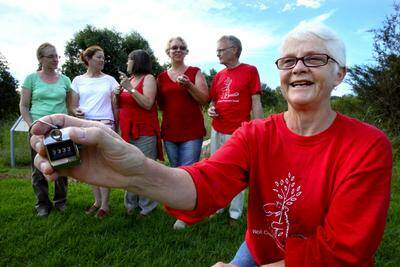
ONE Friday evening a month up to 15 residents of Bexley and its surrounds get together to spend time with the area's flying fox colony.
Create a free account to read this article
$0/
(min cost $0)
or signup to continue reading
Wolli Creek Preservation Society president Deb Little is behind the visits, which see residents, with counters in hand, staring at the sky to tally just how many grey-headed flying foxes are calling Turrella home this month.
Recently the team of 13 volunteers braved an electrical storm to count 3285 bats, but as many as 16,000 have been spotted near Turrella reserve since the first sighting in 2007.
The transient colony roosts in a former field, which was planted with trees in the 1980s by the Friends of Wolli Creek community group.
They tend to arrive about August, before heading further north for winter.
"We were very excited to see them in the Wolli valley. It is like an urban David Attenborough experience seeing them fly out." Ms Little said.
Inspired by their new guests, Ms Little and others began counting them in 2008, in part to try and quantify the impact the proposed relocation of the colony from the Royal Botanic Gardens, Sydney, might have on the creatures, but also to document the numbers here.
"We advocate for the entire valley, not just the plants, but the animals who live there too," Ms Little said. "So many get pushed out from urban areas, it is only the real stalwarts that hang in there."
Grey-headed flying foxes are listed as a vulnerable species in NSW, mostly due to long-term habitat loss. But in urban Sydney there is often little sympathy for the creatures due to noise and disease concerns, Ms Little said.
"There is a lack of understanding," she said. "People think there are a lot of them because in Sydney we see them so often, but they are really declining in numbers overall."
One of the big threats to flying foxes eking out an existence in Sydney is fruit netting, Ms Little explained. Some types of nets are invisible to them at night and if they get tangled in them it often results in serious injury.
Ms Little said simply hanging the net on a structure of wood or PVC pipes around the tree made it easier for them to spot. She also urged residents to purchase wildlife-friendly nets. Details: Wolli Creek Preservation Society
">info@wollicreek.org.au

